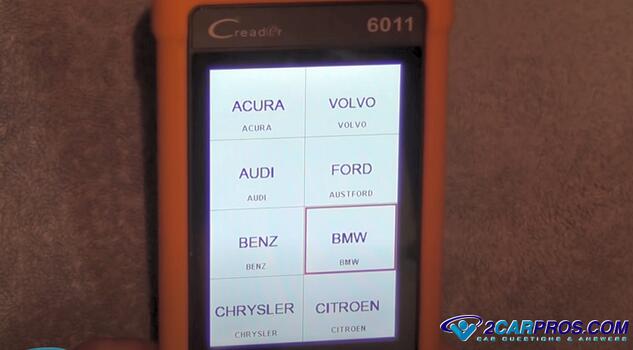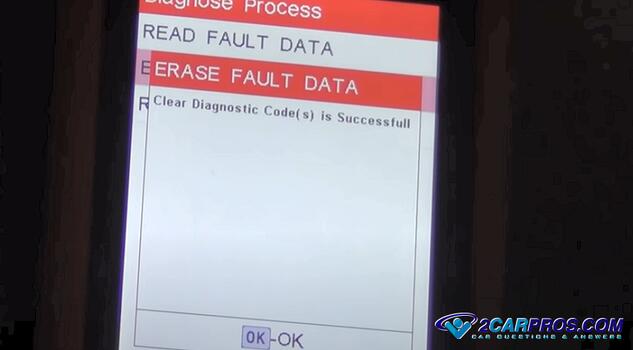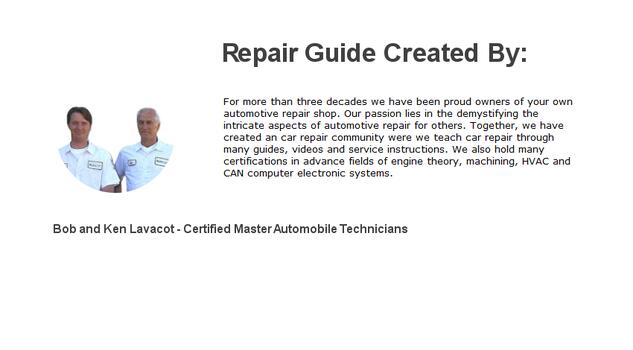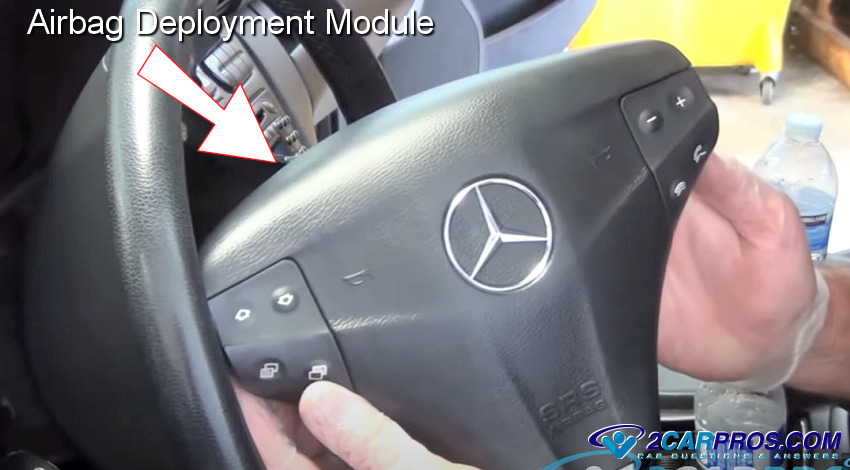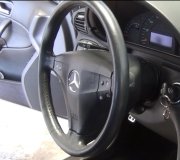Introduction
Gathering the Airbag or SRS system codes is the first step in repairing an airbag warning light problem. In this guide we will show you how this task is done easily and correctly by using an airbag code scanner which you can get on Amazon starting at about $99.00. This guide will provide you with a step-by-step process to gather and clear codes from the airbag system, or often referred to as the Supplemental Restraint System (SRS). Please proceed with caution and consult our professionals if you are unsure about any step.
Note: When the airbag warning ight is on the system is disabled and will not deploy.
Safety Precautions
Safety is paramount when working with and performing repairing the airbag system/SRS. The following steps must be observed to minimize the risk of accidental deployment of airbags which could result in injury.
- Before repairs are performed disconnect the battery and wait at least 10 minutes for the system to power down.
- Do not place your body parts over airbags when performing diagnostics.
Gathering Airbag System Trouble Codes
1. Use an airbag system OBD-II or CAN scanner compatible to your vehicle which will be able to communicate with the safety control interface. Locate your vehicle's OBD-II (On-Board Diagnostics) port, typically found under the dashboard on the driver's side.
2. Connect the code scanner to the ODB2 communication port and turn the ignition switch or push button on, (must have the key fob inside the car). The scanner will turn on and begin prompt screens for selection.
3. Select the manufacture type and prompt the scanner to begin the scan. The code reader (scanner) will then access the airbag control module to retrieve the fault codes.
4. Once the codes are displayed use this chart to see what the definition is which will guide you to how t fix the problem. Note: some manufacturers have their own specific codes for system faults.
Airbag Trouble Code List
B0001 - Driver Frontal Stage 1 Deployment Control: Circuit Open
B0002 - Driver Frontal Stage 2 Deployment Control: Circuit Short to Battery
B0003 - Driver Frontal Stage 3 Deployment Control: Circuit Short to Ground
B0004 - Driver Side Deployment Loop: Open Circuit
B0005 - Driver Side Deployment Loop: Short to Battery
B0006 - Driver Side Deployment Loop: Short to Ground
B0007 - Driver Side Deployment Loop: Resistance Low
B0008 - Passenger Frontal Stage 1 Deployment Control: Circuit Short to Battery
B0009 - Passenger Frontal Stage 2 Deployment Control: Circuit Short to Ground
B0010 - Passenger Frontal Stage 3 Deployment Control: Circuit Resistance Low
B0011 - Passenger Side Deployment Loop: Open Circuit
B0012 - Passenger Side Deployment Loop: Short to Battery
B0013 - Passenger Side Deployment Loop: Short to Ground
B0014 - Passenger Side Deployment Loop: Resistance Low
B0015 - Passenger Seat Belt Pretensioner Deployment Loop: Open Circuit
B0016 - Passenger Seat Belt Pretensioner Deployment Loop: Short to Battery
B0017 - Passenger Seat Belt Pretensioner Deployment Loop: Short to Ground
B0018 - Passenger Seat Belt Pretensioner Deployment Loop: Resistance Low
B0019 - Driver Seat Belt Pretensioner Deployment Loop: Open Circuit
B0020 - Driver Seat Belt Pretensioner Deployment Loop: Short to Battery
B0021 - Driver Seat Belt Pretensioner Deployment Loop: Short to Ground
B0022 - Driver Seat Belt Pretensioner Deployment Loop: Resistance Low
B0023 - Left Roof Rail Airbag Deployment Loop: Open Circuit
B0024 - Left Roof Rail Airbag Deployment Loop: Short to Battery
B0025 - Left Roof Rail Airbag Deployment Loop: Short to Ground
B0026 - Left Roof Rail Airbag Deployment Loop: Resistance Low
B0027 - Right Roof Rail Airbag Deployment Loop: Open Circuit
B0028 - Right Roof Rail Airbag Deployment Loop: Short to Battery
B0029 - Right Roof Rail Airbag Deployment Loop: Short to Ground
B0030 - Right Roof Rail Airbag Deployment Loop: Resistance Low
After Repairs
Once repairs have been made such as a spiral spring (clock spring) or impact sensor replacement (most common), the system could reset itself and clear it's own codes, this will turn the airbag warning light off. If the warning light remains on the codes will need to be cleared manually using the scanner. Just follow the prompts on the scanner and press "okay" you are all set.
Verifying the Reset
Once the codes are cleared, turn the vehicle's ignition system on and start the engine, then observe the airbag warning light on the dashboard. If the light turns off after a few seconds the reset was successful, if it remains on, rescan the system.
Conclusion
Congratulations! You've successfully gathered airbag trouble codes, remember to prioritize safety throughout the diagnostic and repair process, ask one of our experts for help, it is free of charge.
Watch the Video!
Please watch this video of the job being done to glean additional helpful information.
Credits
This guide knowledge base was created by the 2CarPros Team, and by Ken Lavacot: Automobile repair shop owner and certified master automobile technician of over 30 years. If you have question or need help please ask one of our experts we are happy to help. Please visit our 2CarPros YouTube Channel.
